How to Harvest (and Eat) Artichoke Cool Climates
Printed from www.theseedcollection.com.au
The globe artichoke (Cynara scolymus) is a member of the thistle family, with an edible flower bud that's unmistakable for any other type of veggie patch produce. Originally from areas of the Mediterranean and Central Asia, it's happy both in hot sun and in much cooler conditions.
Artichokes can thrive in most parts of Australia, where they'll grow as perennials in warmer climates or as annuals in cooler ones. They're also highly drought tolerant, although they won't fare well in high humidity.
Why Grow Artichoke?
The globe artichoke features many edible parts which are noted delicacies. Having said that, there's no denying that harvesting, preparing and eating artichokes can be a challenge for the uninitiated. The specimens you see growing on the plant look nothing like the prepared end products often seen preserved in jars, and at first glance, it's not clear how to get from harvest to plate or jar. But fear not, it's actually straightforward once you get the hang of it.
If you still need convincing to make the leap into artichoke cultivation, there are several other compelling reasons to find a place for artichokes in your garden.
- The plants are strikingly ornamental with their exotic edible buds.
- They add attractive height to a low-growing veggie patch, or even a flower border.
- They grow quickly and are highly productive, giving you plenty of opportunity to practice your artichoke preparation skills.
The Edible Parts of Artichoke Buds
It's important to note that globe artichokes are an entirely separate and unrelated species to Jerusalem artichokes (Helianthus tuberosus). They share little beyond the common name, growing in completely different ways and with different edible parts.
In comparison to the earthy Jerusalem artichoke tubers, which grow underground, the part that's eaten on a globe artichoke is anatomically a flower bud, confusingly also sometimes referred to as a flower or ‘head’.
The scaly layer of compact 'petals' on the sides of the bud is actually made of bracts, which is the botanical term for the leaf-like base parts of the flower that hold and protect the petals. At the bottom of the bud is the fleshy artichoke heart, and as you pull the bracts off, a small piece of the heart comes with each one.
Above the heart is the fibrous 'choke' from which the plant gains its name. The choke is the part of the flower that will develop into distinctive purple flower petals if you leave the buds to open. In young buds, the choke is tender and edible, but it becomes tough, fibrous and unpleasant to eat as the buds begin to mature and open.
And lastly, below the heart is the stem, of which the inner part at the top is also edible.
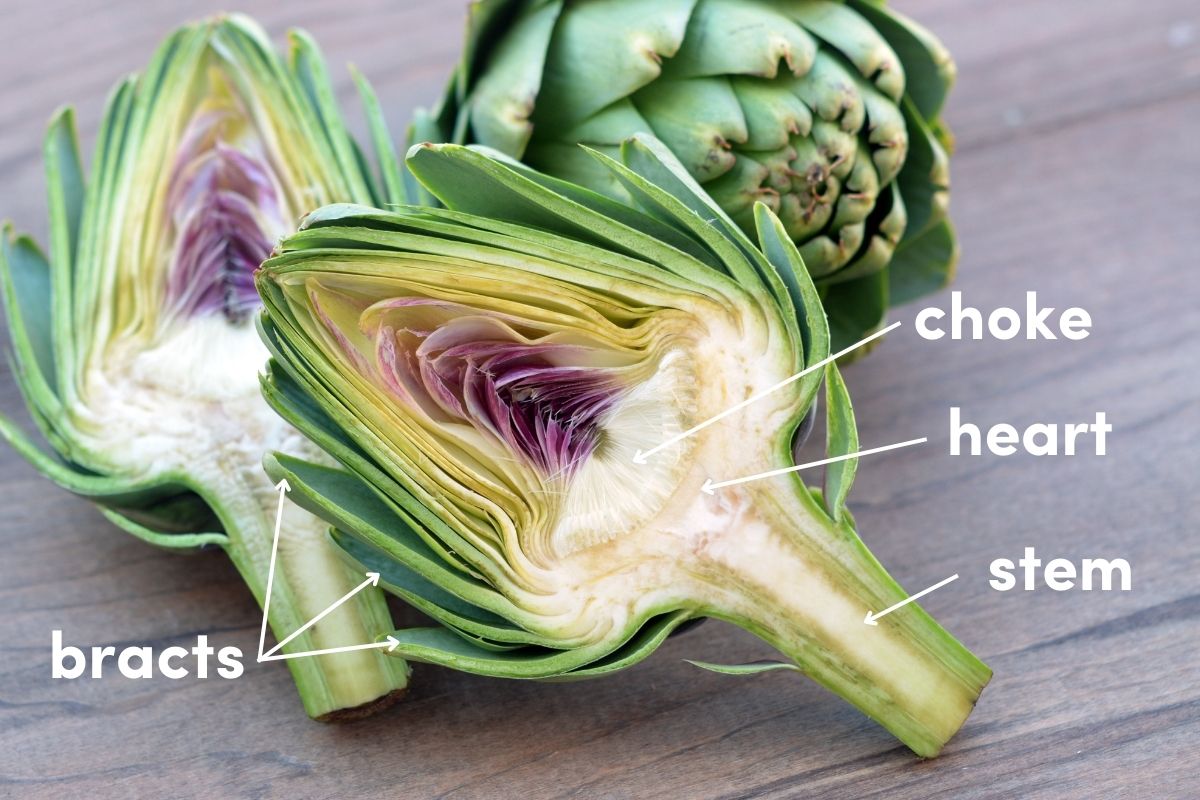
Harvesting Artichoke Buds
Judging when to harvest is key to enjoying globe artichokes at their savoury, nutty best. The ideal point is when the buds are fully formed and have reached the size of a golf ball, but before they begin to open and flower.
To harvest, simply use sharp secateurs to remove the buds along with a few centimetres of stem. Leave at least some of the lower stalk behind, as side shoots will produce smaller buds once the main bud is harvested, giving you a second harvest later on.
Preparing Artichoke Buds
It's at this point that things can become confusing. How do you turn a harvested bud into something edible? Recipes often say 'trim the buds' or similar, but this doesn't necessarily leave you any the wiser. Each cook probably has their own specific method, but here's one of the easiest ways with just six simple steps to follow.
- Cut the artichoke in half lengthwise so you can see what you're doing.
- Cut off the upper bracts in one swoop just above the choke and discard the top part.
- Peel off the outermost remaining bracts (the tough ones) and trim the outer layer from the bases that are left, as well as the outside of the stem, using a parer or vegetable peeler.
- Use a small knife or parer to cut out the choke, which should now be clearly visible.
- Withouth delay, dip the whole remaining heart and stem in acidulated water to prevent discolouration.
- If not using immediately, refrigerate the prepared buds in acidulated water, but don't leave them hanging around for too long.
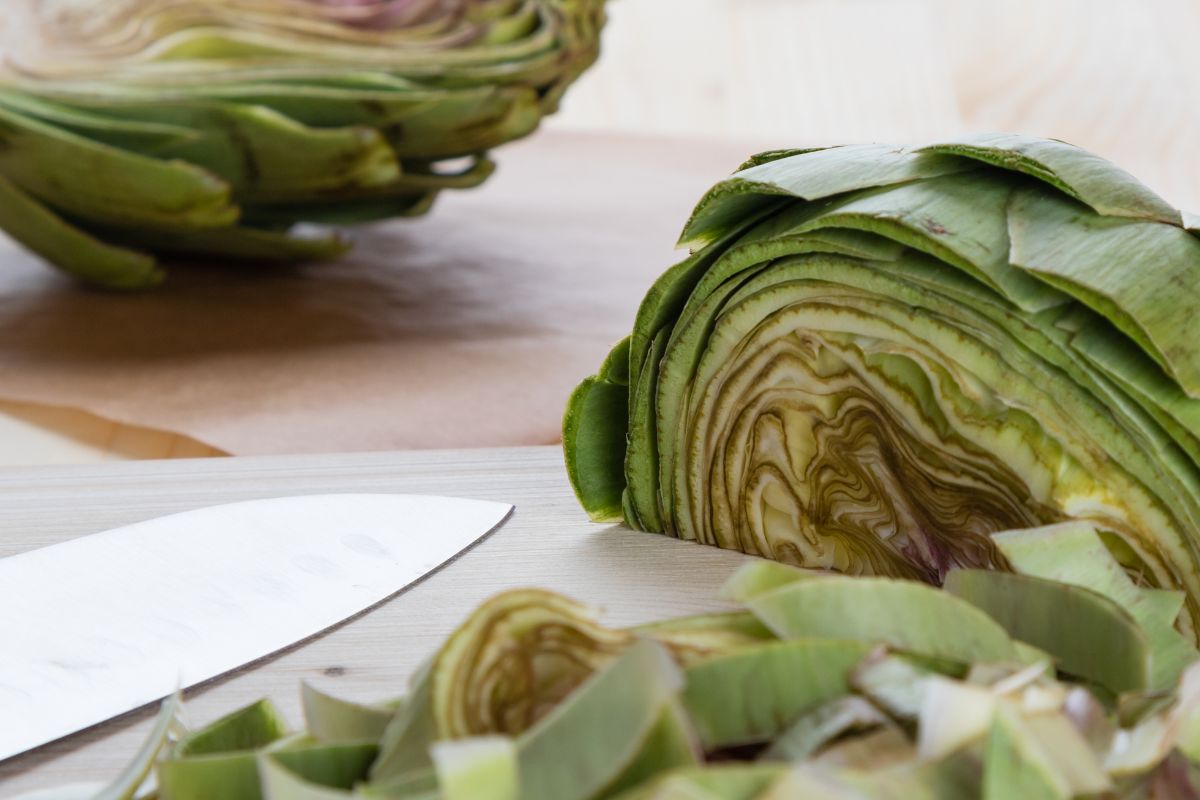
How to Eat Globe Artichokes
In nearly all cases, eating artichokes begins by boiling or steaming the prepared buds until tender, maybe adding some garlic cloves and herbs to taste as they cook. After draining, they can be served hot or warm with melted butter, a vinaigrette or hollandaise sauce.
If not eaten immediately, the cooked, cooled and chopped hearts can be preserved in a good oil with your favourite Mediterranean herbs and, again, maybe some garlic. With sterilised jars and a good seal, they should keep for up to six months in a cool, dark place.
Lastly, in a nod to Italian cuisine's deep love of artichokes, use freshly cooked or preserved hearts as a pizza topping or as part of an antipasti selection alongside cured meats, cheeses and other preserves.
Preparing artichokes can be a challenge at first, but it's straightforward once you get the knack of it. One great reason to grow your own artichoke is that you will have lots of buds available to practice on, and artichoke's high productivity means you'll save money and have enough to eat and preserve while impressing your friends with your culinary skills and knowledge.
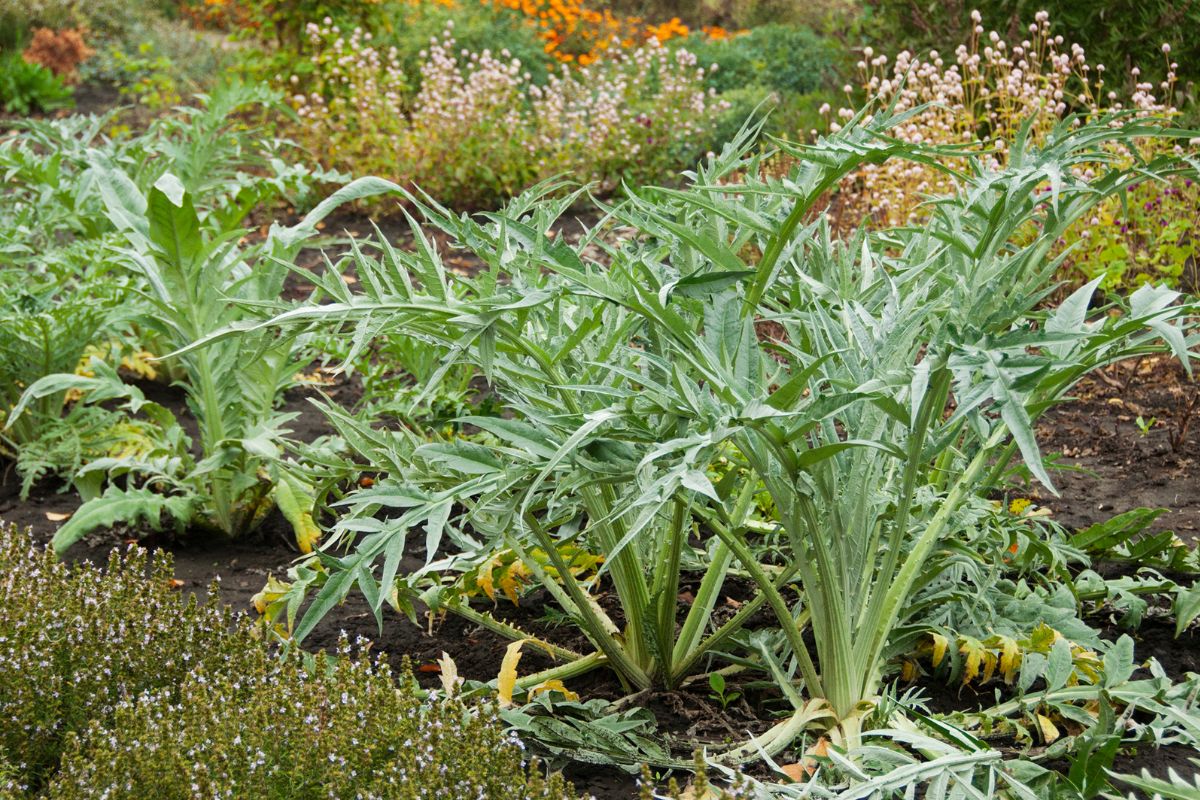
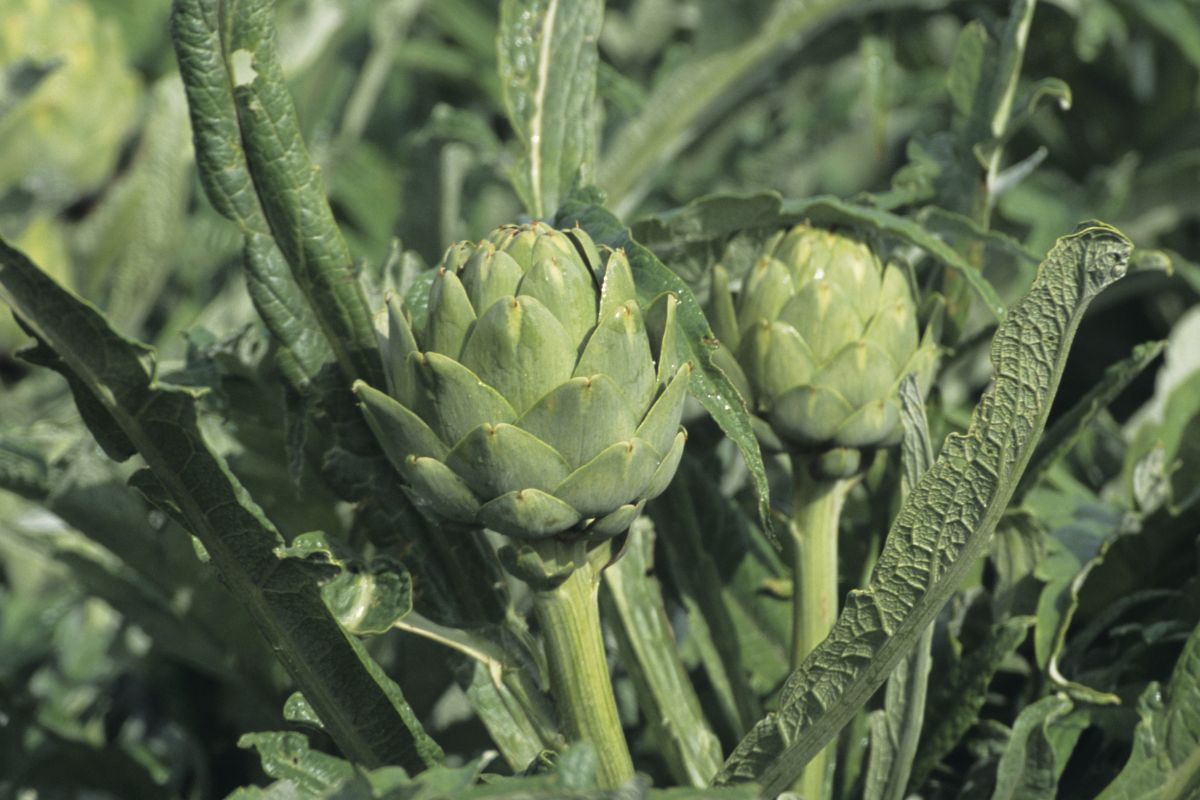
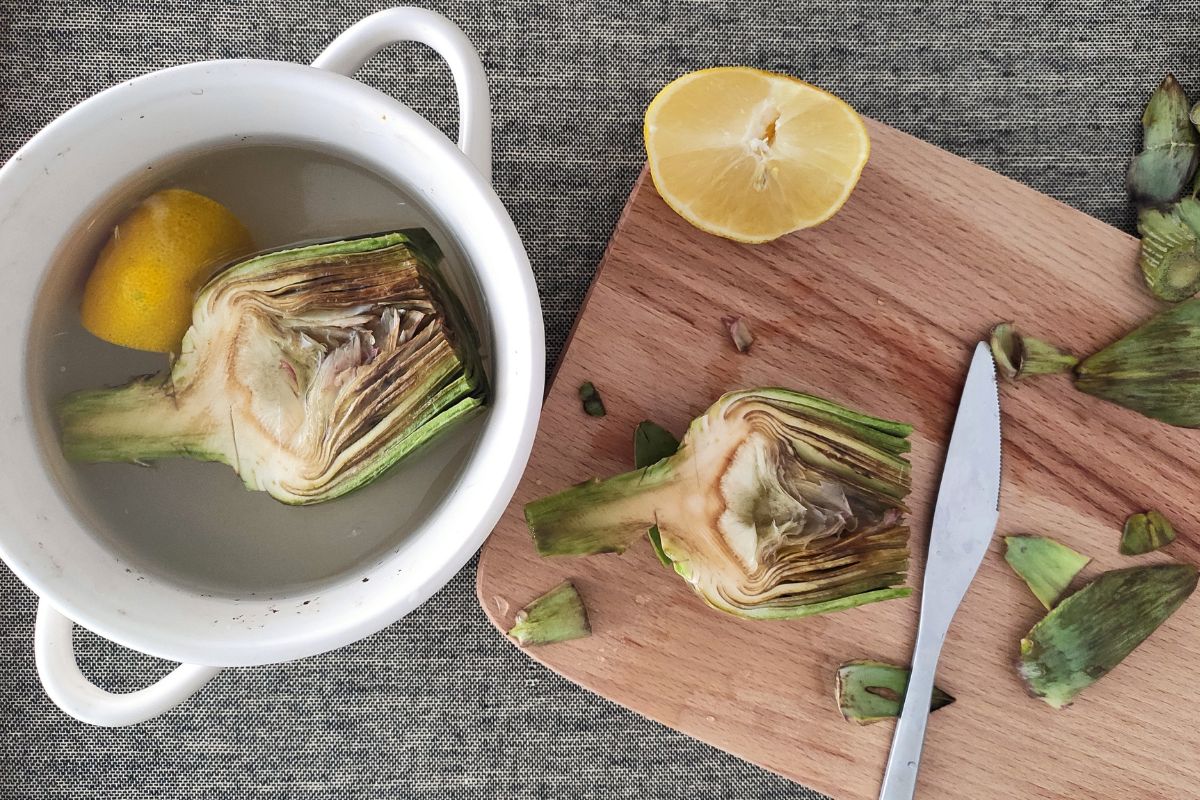
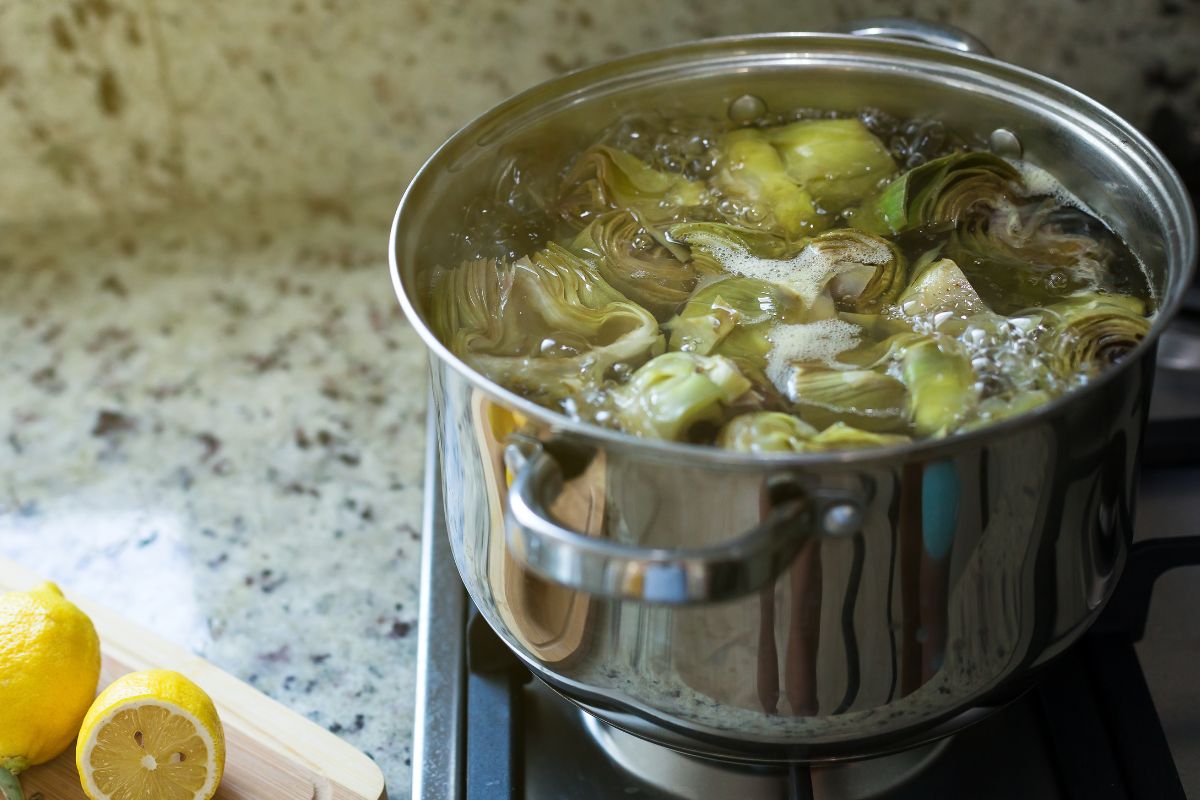
Copyright 2025 The Seed Collection Pty Ltd. For personal use only.
More articles available at www.theseedcollection.com.au/blog